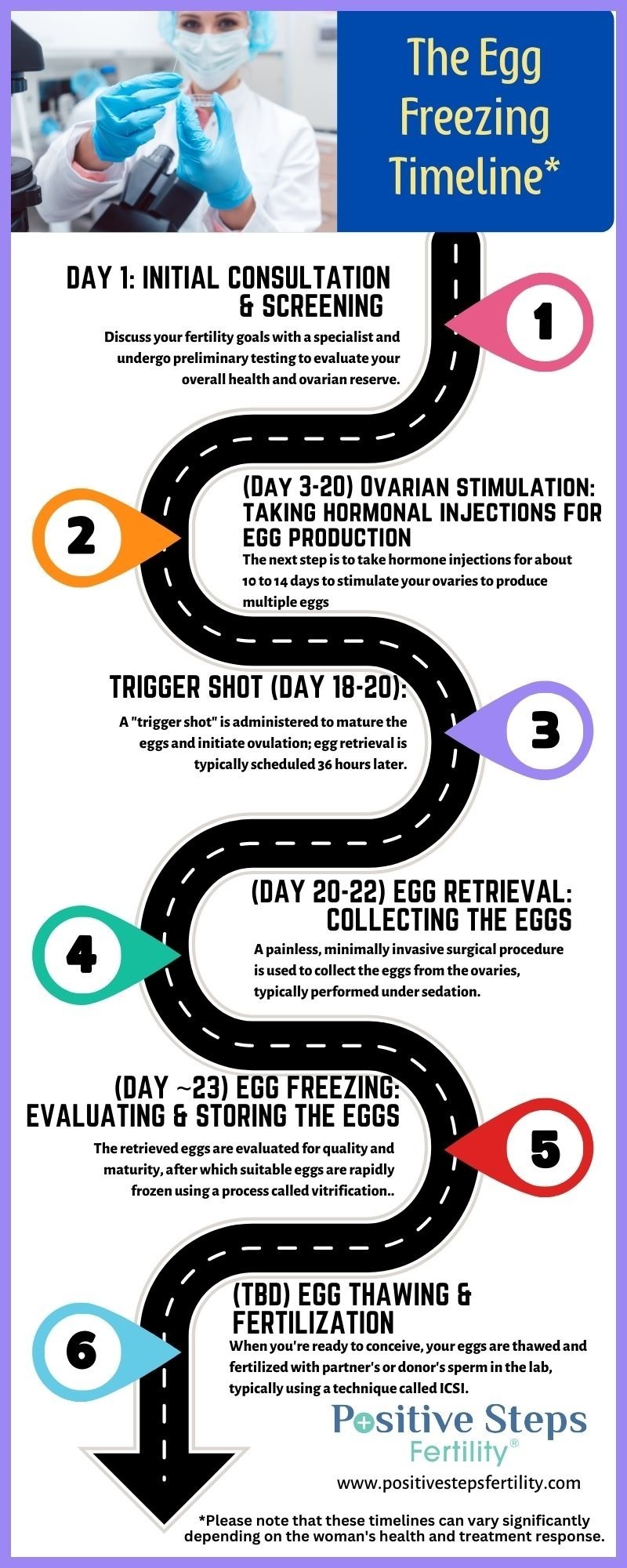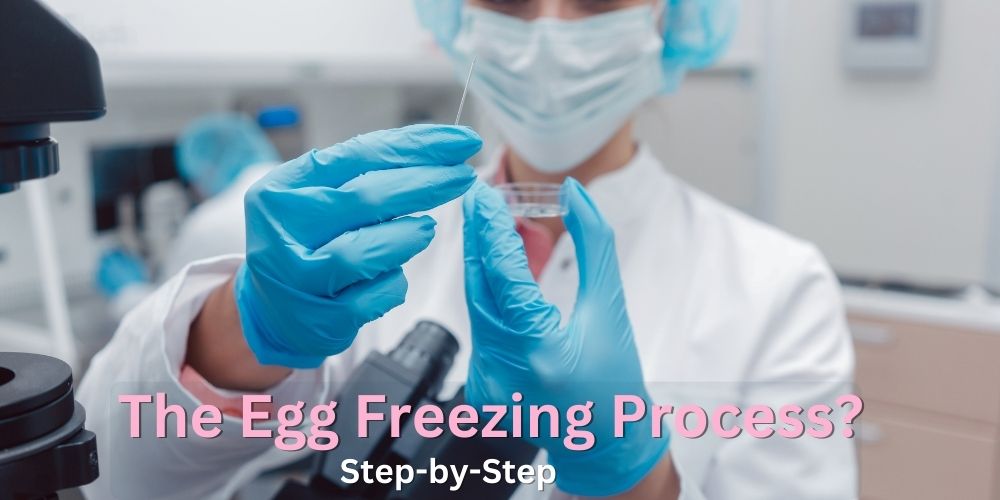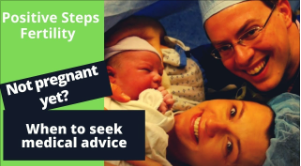Many people know that freezing a woman’s eggs can be a viable way to pursue pregnancy or for fertility preservation. What is more elusive is the actual egg freezing steps and egg freezing process timeline. There are several steps to freezing eggs, and it’s important for anyone considering the frozen embryo transfer method to understand the process of how a woman’s eggs are extracted, frozen, and used to try and establish a pregnancy.
The difference between freezing eggs and freezing embryos
Before you even begin the process of freezing your eggs, or oocyte cryopreservation, it’s important to understand the difference between egg freezing and embryo freezing.
What is FET in IVF?
Frozen embryo transfer (FET) is one of several methods of embryo transfer. This is a process used in IVF to transfer fertilized eggs (embryos) into a woman’s uterus with the intent of having a successful implantation.
What is egg freezing?
Egg freezing is a technique used in assisted reproductive technology (ART) to preserve a woman’s fertility by freezing her eggs for future use. The main difference between FET and egg freezing is that in egg freezing, the egg is not fertilized with sperm
Step 1: Consultation: determining whether egg freezing is right for you (Day 1)
The first step of the egg freezing cycle is determining whether or not this is the right decision for you. This, of course, is not a decision you can make on your own. You should meet with a fertility specialist who can evaluate your medical history, perform a physical exam, and order some tests to assess your ovarian reserve and overall health. Everyone is different, and a fertility specialist can help guide you through the ins and outs of fertility.
Here are a few common reasons why women choose to freeze their eggs:
- Family history or genetic risks: Some women may have a family history of early menopause, premature ovarian failure, or genetic disorders that affect their fertility. Egg freezing can help them avoid the risk of losing their eggs prematurely or passing on a genetic condition to their offspring.
- Medical conditions or treatments: Some women may have health issues that affect their fertility, such as endometriosis, polycystic ovary syndrome (PCOS), or cancer. Egg freezing can allow them to preserve their eggs before undergoing treatments that may damage their ovaries, such as chemotherapy or surgery.
- Career or education goals: Some women may want to focus on their professional or academic aspirations before starting a family. Egg freezing can give them the option to delay motherhood until they feel ready and established in their chosen field.
- Personal or partner preferences: Some women may still need to find the right partner, or may have a partner who is not ready or willing to have children. Egg freezing can give them the freedom to pursue their personal or romantic goals without compromising their fertility.

Even if several of these reasons describe you, talking with a medical professional is crucial to fully determine whether egg freezing is right for you.
Step 2: Ovarian stimulation: taking hormonal injections for egg production (Day 3-20)
The next step is to take hormone injections for about 10 to 14 days to stimulate your ovaries to produce multiple eggs. The purpose of producing more eggs than in a natural cycle is to be able to freeze more eggs and thus have more chances of achieving pregnancy when the eggs are eventually used.
Ovarian stimulation usually involves the following steps:
- The patient takes medications called gonadotropins, which are synthetic versions of the hormones that normally stimulate the ovaries to produce eggs. These medications are injected under the skin or into the muscle, usually for 10 to 14 days.
- The patient’s response to the medications is monitored by blood tests and ultrasound scans. The blood tests measure the levels of hormones such as estrogen and progesterone, which indicate how the ovaries are functioning. The ultrasound scans show the number and size of the follicles, which are fluid-filled sacs that contain the eggs.
- Trigger Shot: When the follicles reach a certain size, another medication called human chorionic gonadotropin (hCG) is given to trigger ovulation. This medication mimics the natural surge of luteinizing hormone (LH) that occurs before ovulation in a natural cycle. This usually occurs around day 18-20.
Step 3: Egg retrieval: collecting the eggs with a surgical procedure (Day 20-22)
When your eggs are mature, you will undergo a minor surgical procedure called egg retrieval. About 34 to 36 hours after the hCG injection, the eggs are retrieved from the ovaries by a minor surgical procedure called transvaginal oocyte retrieval (TVOR).
The procedure is typically done under sedation or general anesthesia, so the patient does not feel any pain or discomfort. The doctor uses an ultrasound probe to locate the follicles, which are fluid-filled sacs that contain the eggs, in the ovaries.
Then, the reproductive endocrinologist inserts a needle through the vaginal wall and into each follicle and gently aspirates the fluid and the egg. The needle is attached to a suction device that collects the eggs in a test tube. The process is repeated until all the eggs are retrieved, usually between 10 to 20 eggs per cycle.
The procedure takes about 15 to 30 minutes, depending on the number of eggs retrieved. There may be some mild cramping or bleeding after the procedure, but these are usually temporary side effects. The patient is advised to rest for the rest of the day and avoid strenuous activities, sexual intercourse, and tampons for a few days.
Step 4: Egg freezing: evaluating and storing the eggs (Day ~23)
After the egg retrieval, we immediately transport and evaluate the mature eggs for quality. The highest quality eggs are then frozen using a technique called vitrification.
Vitrification is a fast freezing method for eggs using liquid nitrogen, cooling them to a very low temperature of -196°C. This process prevents the formation of ice crystals inside the eggs, which can damage their structure and viability. Instead, the eggs transform the water molecules into a glass-like substance that preserves their quality. The whole process takes only a few minutes.
The frozen eggs are then stored in liquid nitrogen tanks until you are ready to use them. Frozen eggs can last up to and sometimes over a decade.
Step 5: Egg thawing and fertilization: using your frozen eggs (Variable)
This is when the typical timeline breaks down. Since frozen eggs last so long, it depends on when you are ready to use your eggs. When you decide to use your frozen eggs, they will be thawed and fertilized with sperm from your partner or a donor using a technique called intracytoplasmic sperm injection (ICSI).
During ICSI, the man’s semen is cleaned by separating the healthy sperm from the unhealthy sperm and other waste. Good sperm will have optimal shape and movement for fertilization.
An embryologist then uses a high-powered microscope to identify a single healthy sperm and pick it up with a tiny, hollow needle. The sperm is then injected through the tough outer shell of the egg (called zona pellucida) and into the cytoplasm. Typically, the process injects several eggs at a time.
If fertilization is successful, an embryo will develop that can be transferred into the woman’s uterus or frozen for use in a future IVF treatment.
Step 6: Embryo transfer: implanting the fertilized egg (5-7 days after fertilization)
The final step is to transfer one or more embryos into your uterus, typically using a thin catheter. This is a relatively painless procedure that does not require anesthesia. You may be given medication to relax your uterus and make it easier for the embryos to implant. You will lie on a table with your legs in stirrups, and a speculum will be inserted into your vagina to expose your cervix.
The fertility specialist will then insert a thin catheter through your cervix and into your uterus, using ultrasound guidance to ensure proper placement. The embryos are loaded into the catheter by the embryologist and gently injected into your uterus. The catheter is then removed, and the speculum is taken out. In all, the procedure takes about 10 minutes to complete. You may experience mild discomfort and some cramping or spotting. This is normal and not harmful to the embryos. You should avoid strenuous activities, heavy lifting, hot baths, and sexual intercourse for a few days after the procedure.
The implantation of the embryos can occur up to 72 hours after the egg transfer procedure. This is when the embryos attach to the lining of your uterus and start producing pregnancy hormones. You will then wait for about two weeks to take a pregnancy test and confirm if the embryo transfer was successful.
While there is a typical timeline for egg retrieval, there is no exact timeline for using your frozen eggs. It depends on your medical history, life circumstances, and when you plan on starting a family. Hopefully, by better understanding the process of egg freezing, you can know what to expect if you and your specialist decide that egg freezing is the best path forward.
If you are feeling overwhelmed by testing and treatment options, reach out to a fertility specialist today. Don’t suffer in silence. Find answers, find peace.
Other reading you may be interested in:
positivestepsfertility.com/donation-surrogacy
positivestepsfertility.com/fertility-treatment/treatment-options/




